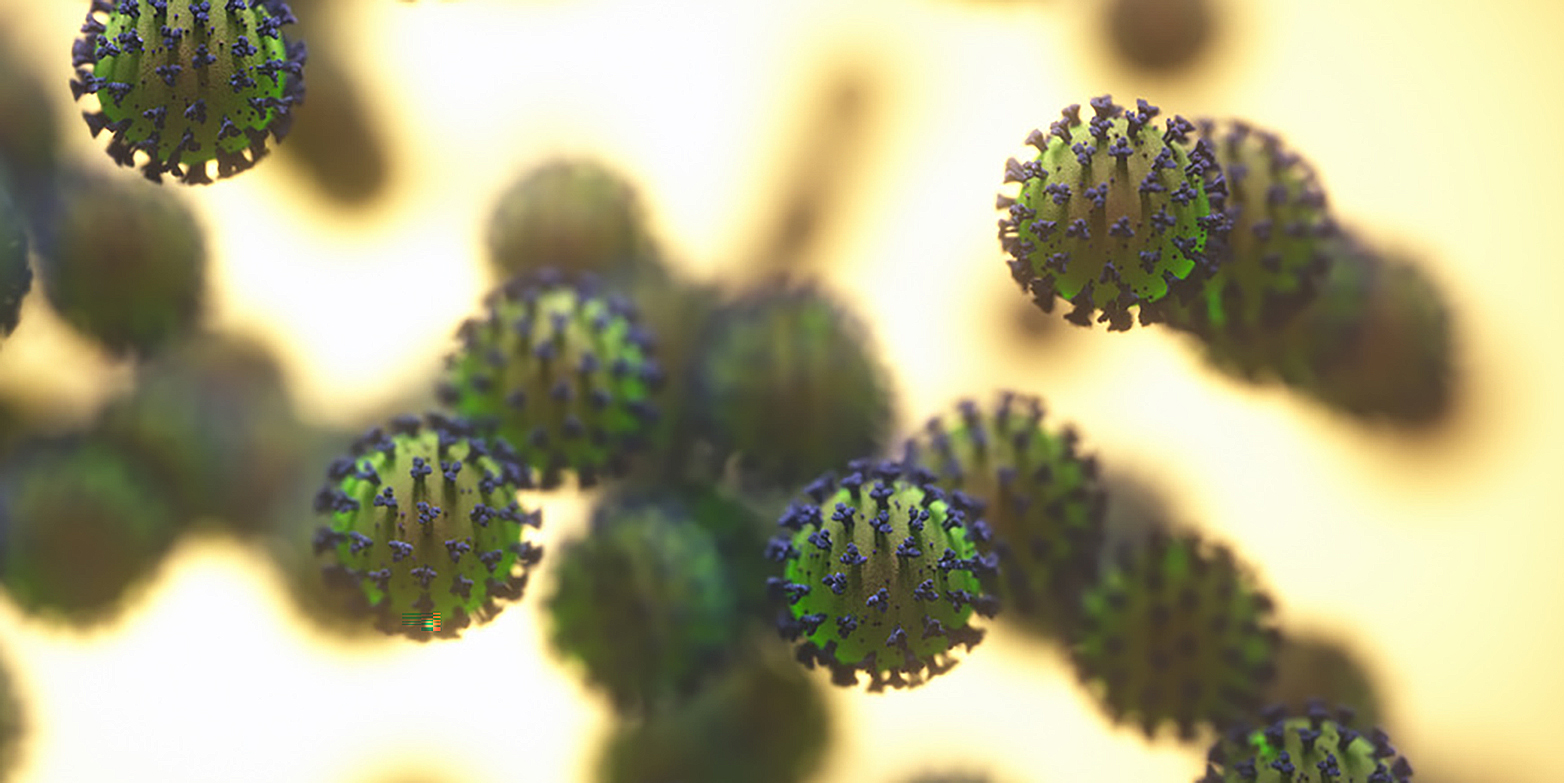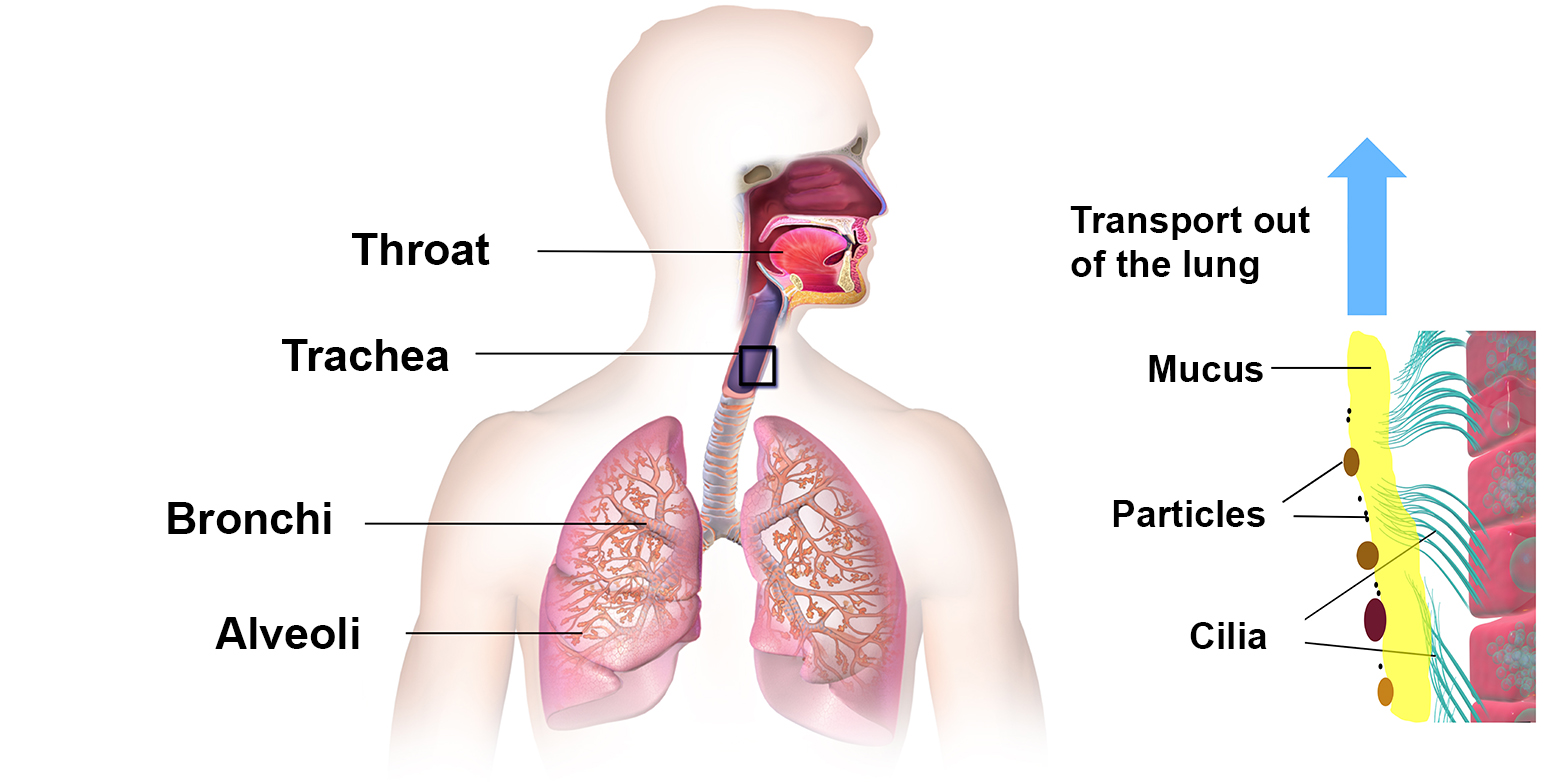Reducing the risk of infection
Biology shows us that there are additional ways to reduce the risk of serious coronavirus infections, in addition to hand hygiene and keeping distance, Viola Vogel writes.

We all know the importance of good hand hygiene and of keeping our distance if we want to protect ourselves and others from infection with the novel coronavirus. These are targeted measures to curb the epidemic and relieve the burden on our health care system, giving it sufficient capacity to treat the most vulnerable people in our society.
However, there are additional measures that we can take to reduce the risk of infection and the severity of the disease: Paying conscious attention to taking care of our throat and everything that supports the self-cleaning powers of the respiratory tract make a difference. As the situation develops, this will become increasingly important. The more the virus spreads in our environment, the harder it will become to avoid coming into contact with it. It is thus increasingly important to ensure that as few of the virus particles as possible reach our lungs and cause inflammation.

Our body not only fights viruses with specific antibodies, but also deploys an arsenal of other, non-specific defence mechanisms when it comes into contact with pathogens. Biology shows us how we can reinforce these endogenous safeguards to our benefit: When the coronavirus travels through our body, what happens on its journey before it attacks our cells? And how does the virus actually get into our lungs?
Conveyor belt cleans the respiratory tract
What we know so far is that the coronavirus spreads mainly via droplets. This happens when an infected person exhales viruses embedded in tiny water droplets and another person close by inhales them. The virus-laden droplets settle on the mucous membranes in the nose or throat, or on the walls of the trachea and bronchial tubes.
For the virus to multiply, it must infect a cell closeby – which takes time. During this process, the virus replicates its genetic information, produces a large amount of new virus particles and causes the host cell to burst, releasing many virus particles. Over several replication cycles, the virus spreads further into the respiratory tract until reaching the last branches of the lungs.
"We are not helpless against the coronavirus."Viola Vogel
Importantly though, the respiratory tract is equipped with extremely effective self-cleaning mechanisms: its walls consist of cells that expose tiny cilia, which are covered by a thin layer of mucus. In analogy to a conveyor belt, the cilia all move in synchrony in a circular pattern to transport the mucus slowly from the bronchial tubes up into the throat. In this process, particles deposited on the mucus are removed from the respiratory tract. However, when the mucus becomes too viscous or the mucus layer gets too thick, this cell-driven conveyor belt begins to stall.

In the lungs, a final, non-specific defence mechanism against viruses is provided by scavenger cells in the immune system, which are found in the alveoli. These cells are responsible for keeping the lungs clean; in doing so, they don’t distinguish between pathogens and pollutants from the environment. But their capacity to gobble up particles is limited. The more time they spend removing fine dust and other particles from the alveoli, the less efficient they are at reducing the number of viruses.
Measures to reduce the number of viruses
It is important to realise that we do not necessarily become infected as soon as we inhale a virus. The probability of infection increases with the number of viruses, which means that the dose of viruses is critical. Breathing only through the nose already reduces the number of viruses that enter the mouth region. Once they have entered into our body, at least some of the viruses that get stuck on the lining of the throat might get removed when using antiviral mouthwashes, of which a wide variety is available. Common home remedies that we typically use to fight early symptoms of a flu infection, such as gargling and drinking hot ginger tea, are fully justified too. Regular inhalation of water vapour further helps to keep the mucus layer in our respiratory tract sufficiently fluid, which in turn helps the conveyor belt to clean out particles more efficiently. Finally, to allow the scavenger cells in the alveoli to fight off viruses as efficiently as possible, it helps to avoid exposure to other environmental pollutants such as particulate matter, and to give up on smoking.
Taking small, additional actions can help to further reduce the number of viruses that enter our lungs, and you can help at several levels: from the nose, throat and bronchial tubes all the way to the alveoli. And it is this number of viruses, again, that determines whether a severe lung infection might occur or not. We are not helpless against the coronavirus. Each and every one of us can do our bit to keep it in check.
Amendment dated 16.03.2020
Dear Readers,
I deeply appreciate the many reactions. Because of the large number of comments, I have decided not to answer each and every one of them, but to provide answers collectively.
I would like to emphasize that I am a scientist and not a physician. Therefore, I will not give specific therapeutic suggestions, but will rather try to explain mechanisms that we might be able to exploit.
Many details about the behaviour of the new coronavirus are not yet known. As soon as we gain new insights, these will continuously refine the methods of fighting the pathogen. However, we must be aware that this may take some time.
The effectiveness of social distancing and hand hygiene measures are well known. In my Zukunftsblog contribution I pointed out that respiratory hygiene could also be important. Many of you are now asking for specific recipes and products in this regard. Some have also suggested their own recipes. As the knowledge about the current pandemic pathogen is still limited, I would like to comment only about mechanisms in general, but not on specific recipes.
Coronaviruses – like the influenza (flu) virus – are surrounded by an outer layer (membrane) that contains a large proportion of lipid molecules. All substances that destroy lipid membranes destroy these viruses too. This means they have an antiviral effect.
Soap is one of these substances. This is why it is so important and effective to carefully wash our hands with soap. Toothpaste also contains surfactants which are able to destroy lipid membranes. It could therefore be effective if we gargle with the foam remaining in our mouth after brushing our teeth. However, I am not aware of any scientific literature on this.
As far as plant substances are concerned: many plants produce a range of natural substances to protect themselves against pathogens (including plant viruses). Ginger, for example, contains phenolic compounds which have been shown to have antiviral activities, whereby some of their ingredients might again perturb the lipid-rich envelope of certain viruses.
Because of the structural similarities between corona and influenza viruses, plant compounds used to alleviate the early symptoms of flu infections could possibly also help to alleviate the course of a COVID-19 infection. However, this is speculation.
Please stay healthy and take care by protecting yourself and others.
Viola Vogel
Reference
Vogel V: external page How to Further Reduce the Risk of Serious COVID-19 Infections: Exploiting the Fragile Viral Envelope and the Self-Cleaning Mechanisms of Our Respiratory System, uploaded to preprints.org on 24 March 2020 (manuscript not yet peer-reviewed)
Comments
Additional comments are available for the German version of this article. Show all comments
Pertinent and very useful. Thank you
Very useful insights and information. Thank you.
Thank you so much! So we are not totally helpless at all! What I heard: the root of liquorice should prevent the virus from multiply. - Do you know if the virus is - like bacteria - attracted to sunflower oil? That one could pull the oil through the teeth and spit it out? And the virus with? (in Germany we called it fletchern)
Many thanks Viola, this is very helpful and kind of you to share with others. I have for a long time been rinsing my mouth after cleaning teeth with Himalayan Salt water, and with the first sign of any sore throat or swollen glands will go further than rinsing, and use the salt water to gargle into the throat. It seems to ward off any infection. Also I find that avoiding dairy products will help to clear colds and mucous.
Hard to believe that a nose rinse was not mentioned
Sehr gut und sollte in den Tages Zeitungen veröffentlicht werden können. Merci vielmal.
Thank you! It is good to know, that our biology can protect us against viruses, if we pay attention to its functions and take care of them.
Dear Viola, very thankful for learning more about our body’s defence systems. Do you perhaps also know something about the purpose of fever? My understanding is that it is a mechanism to prevent (or make it difficult for) the virus ‘invading’ the cell. And that at the same time it support some specific immune cells to be more effective. Is that indeed so? Many doctors seem to prescribe antipyretics when fever occurs, and I struggle understanding why. Many thanks!
Dear Madame Prof. Vogel, I am pleased to read your encouraging recommendations. My ear-nose-throat specialist mentioned to me, that the nasal passages are one of the dirtiest places in our bodies; they are the scavengers that filter the air we breathe. I would like to confirm that ginger tea, eating pickled ginger (Japanese standard on the table) are very helpful. I am successfully able to combat most colds, flus, sore throat if at the very earliest sings of an attack the nostrils are rinsed and the throat cleansed by deep gargling (both with Emsersalz solution). Simple tap water to clean the nostrils by blowing (! not inhaling) strongly into a cupped handful of water moistens the mucus, which can be easily removed thus freeing up the tiny hairs, reduce swollen tissue and help for free breathing. After this I use a sterile saline spray to do a final clean. Hoping that some people benefit from this. On another note, body hairs, wherever they are, perform sensible biological functions. Perhaps we could respect that more and leave them to do their good work for us. You as a professional or someone else might like to educate the general public on this topic as well. Thank you and good health.
Wunderbar! Ausgezeichnet!
My grandmother used to drop three drops of merthiolate down our throat when we had sore throats to kill the bacteria. Our sore throats would be gone in a matter of thirty minutes to an hour. We have done this for generations and it has always been effective. Would it help in this situation?
An article with interesting hints. I can understand everything and I practise it myself. I do worry, however, that some people feel too safe with it. Social distancing is still the most important measure to take place.. This is for self-protection and to avoid infection. But nothing against the given advice. It supports all the other efforts. Thank you for sharing.
Thanks for this precious information. I have also increased my nose rinsing practice (with lukewarm, ca 1% saltwater) as I do every flu season. Is there evidence that this might reduce the infection risk, too?
Thank you very much for the article and reminding about general hygiene practices for our throat and lungs. And especially I liked the example you have taken conveyor belt mucus blocking the function. It makes everyone realize the benefit the simple measures can bring.
Well written but very long. A bullet list somewhere in there or on the bottom helps user and helps you spreading the article.
Great, thanks
Dear Ursula Thank you for this helpful information. I am an ENT speech and language therapist who always advocates steam inhalations as a way of thinning unhelpful tenacious thick mucus secretions so completely understand your point. I also understand why nasal breathing and gargling may help. However I am unclear as to the scientific basis of drinking hot ginger drinks. Could you explain to me why ginger in particular is helpful? And why did the drinks need to be hot? My understanding is that as one is swallowing all liquid, it is cleaning the pharyngeal area and washing any material into the oesophagus.
Interesting post - what antiviral mouthwash would you recommend, I have been looking to no avail...
As a microbiologist who with a scientific colleague won a first prize for our paper presented at the World Congress of Indectious Diseases held in Nairobi in 1992, I know quite a bit about human contagious diseases. The coronavirus virus has a microstructure which is very different from most other families if microorganisms. They mutate very effectively and thus are very dangerous pathogens. They need be avoided afap and there is no other protection. Avoid any practice that can get you being infected There is no other way.
She says to follow all advised protocols I believe more than once. So glad you are an expert. But by ignoring her sound advice which she makes very clear is a recommendation in addition to what you and every other responsible "authority"advocate is to distract from an important message. Why? Apparently to speak to your expertise and reiterate the obvious. The world is taking unprecedented measures to shut this down. Who do you think amongst this readership doesn't get that this is a very dangerous pathogen we have to avoid by social distancing and stymie with rigorous hand washing/surface sanitation? Do you disagree that respiratory health and hygiene are critical? What's your point? Other than that you are an expert in this is a dangerous pathogen I'm not seeing one!
A reassuring simple information but well very defined for general public to understand the anatomy and take precautions!
This article answers many questions which I had! Thank you!
I'm writing to you from Italy. Thank you Ursula for this concise but clear text on reducing the risk of coronavirus infection. I shared the link to your paper with my lab staff.
Thank you for this precious piece of information and advice on how to mobilize and support our self-healing mechanisms! This article deserves to be spread worldwide!
Dear Viola Thank you so much for this statement. I think it is curcial to have measures to take which are simple and effective. Therefore, I really appreciate your contribution and will forward it to as many people as possible. I'm a biosafety professional and I receive so many questions from concerned people these days that I'm glad for any constructive input I can get. Empowering people is the best help we can get, also against anxiety. Thanks again Ursula